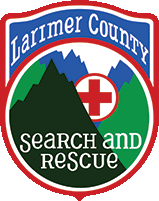In Memoriam
Albert Snow "Ab" Taylor
November 24, 1924 - September 9, 2013
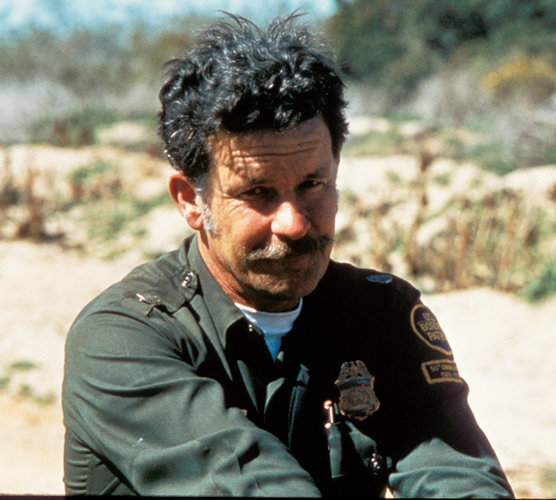
|
| Ab Taylor, shown in 1975, tracked innumerable immigrants and also helped capture killers and kidnappers and find lost children. (Don Cooper ) |
“Ab” Albert Snow Taylor
Born 11/24/1924, San Angelo, Texas. Passed 9/9/13, in Alpine, California
He was always a fighter........
During WWII he was too young to join the military, so he dropped out of high school, joined the Civil Service and went to England "to fight the Germans". He was one of the youngest Americans in Europe during WWII, working in the aircraft industry building fighters for the British R.A.F.
Returned to America when he was old enough to enlist in the US Navy, and served on the USS Hancock in the South Pacific. He took up boxing and was the Navy, Golden Gloves and Middleweight Champ.
WWII ended, he came home, finished High School, met his first wife Ruth Evelyn Coulter, returned to Stephenville, Texas, enrolled in college to become a large animal veterinarian. (That career path ended when he learned how to clear a bowel blockage in a living, breathing ....and kicking horse).
He joined the Border Patrol in 1949, at College Station, Texas. He was stationed in Brawley, San Bernardino, Indio, Chula Vista, and El Cajon, California. The Taylor family finally settled down in Bonita, California and the three children finished their schooling there.
He was instrumental in developing the art of tracking humans as they crossed the border from Mexico and headed north across the desolate backcountry of San Diego County.
His love for animals and love for tracking combined for a menagerie of pets as the Taylor kids grew up.....raccoons, skunks, coyote, monkey, every species of reptile imaginable including live rattlesnakes, rabbits, squirrels, even a little, lost Chihuahua named "Gato" (that became Mom's best friend)....if it was out there, he "had" to catch it and bring it home.
First wife, Ruth Evelyn died from Cancer in 1975.
Retired from the Immigration Service in 1978.
In 1980 his reputation reached Hollywood. Charles Bronson was cast to loosely portray "Ab", in the movie, "Borderline". Quite a treat for the Taylor kids and grandkids to spend Thanksgiving on the set of a Hollywood movie about their Grandpa.
He met his second wife Dorothy Wagoner, became involved with the National Association for Search and Rescue (NASAR) and travelled the country six months every year. He was involved in searches, guest speaking, and as an instructor in tracking and finding lost humans.
A pivotal moment happened in1981 when 8 year old Jimmy Beveridge became separated from his family while on a camping trip in the San Diego Mountains. He was the first child "Ab" was not able to rescue (in all those years and all those searches). This inspired Ab and others to create "Hug-A-Tree", a children's survival course for what to do if lost on an outing. His grandson Jon was the star of the first set of home-made slides, done in one intense weekend of shooting. It grew to become an international movement, fueled by volunteers, to reach out to elementary school children and teach them how to survive if separated from friends or family during a wilderness outing............... Over the years the program has saved hundreds of kids. (Google NASAR, Hug-A-Tree)
He met his third wife Lillian Beam and they toured the country together putting on Hug-a-Tree and tracking seminars, supported by local NASAR units. Travelling in the motor home six months out of the year, staying over at friend's homes, he had a friendship network in all corners of the country and was never more than a day's drive from "hookups" for the night. Hug-A-Tree was an amazing success. Eventually, with the help of many tireless dedicated volunteers and NASAR, it went international, and the next generation went from slide shows to dvd's, which is still taught in schools today.
He wrote the book "Fundamentals of Mantracking: The Step by Step Method" with Donald Cooper in 1990 as a culmination of all these experiences. His favorite quote is featured in the Dedication of that book:
"100 years from now it will not matter, what kind of car I drove, what kind of house I had, how much money in the bank, nor what my clothes looked like..... But the world may be a little better because I was important in the life of a child." Anonymous
Ab is survived by his wife Lillian from Alpine, California, two sisters, Barbara Tolch from Madison, Wisconsin and Marjorie Grubb, from Seminole, Oklahoma, 6 kids, 14 grandkids, 16 great-grandkids and more cousins, nieces, nephews, in-laws and out-laws than can be quantified at this time.
He lived out his last days in Alpine, California with Lillian, at the residence they called home for 30 plus years......in his final days his fight was with Dementia/Alzheimer's...... his nurses and caregivers will confirm that he was a FIGHTER.....God bless them for the work they do...... for their caring, their patience,........ and especially for their forgiveness.
Note:
The basis for the above came from the Valley of Life web page for Ab Taylor
The text was presumably written by a family member. It also appeared as a Facebook posting.
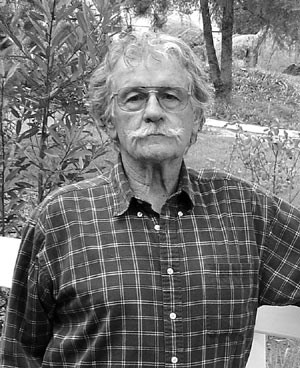
|
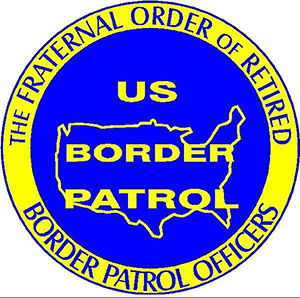
|
Founder of Hug-a-Tree faced murder, movie stars, in long border career
By Nancy Slaff
For The Alpine Sun (2144 Alpine Blvd. Alpine CA, 91901)
ALPINE — Two days had passed, adding to the fear that all was not well. Starting with zero and trying to achieve something close to heroic, an off-duty fireman reported he had seen what appeared to be a Border Patrol vehicle in a ravine, almost buried by brush.
Hiking through deep chaparral in the nearby Anza mountains, they found the concealed vehicle and tracked several footprints to a nearby cabin. Inside, handcuffed together and shackled to a wood stove lay the bodies of Border Patrol Agents George Azrak and Theodore Newton, both shot in the back of the head.
The date was June 15, 1967, and will live forever in the memory of retired Senior Border Patrol agent Albert “Ab” Taylor, who found the abandoned vehicle and tracked the sign to the cabin. After FBI agents took the investigation, an informant led to the arrest of the four suspects nearly one month later. None were given the death penalty.
One, Victor Bono, was released from prison in 1998 because, according to the parole judge, it was “vindictive to keep him in prison.” The second, Florencio Mationg was scheduled for a parole hearing last year.
A man gifted with excellent tracking abilities and a sense of purpose, Taylor is not one to take praise for his accomplishments. “My life certainly has had its sad moments and happy moments,” Taylor recalls with grim irony. Another tragic event involved the search for Jimmy Beveridge, lost near the Palomar mountains in 1981. Little Jimmy, age 11, had gone hiking with family members when he became separated. After days of futile search and rescue efforts by other agencies, Jimmy’s grandfather called Ab Taylor, a renowned tracker, and asked for help. By the time Taylor was called, three days had passed. Taylor located the body — Jimmy’s young life was lost to the harsh mountain environment.
Following his retirement from the Border Patrol, he founded Hug-A-Tree, a personal devotion aimed at teaching children how to survive before they become lost. Simply put, go to the nearest tree…and stay there. Of course, it is best to carry water, and a whistle, and lots of other survival items, but very often people, certainly children, take off on a hike not thinking that a loss of direction may lurk around the next hillside.
&Over the years, Taylor and friends took that program to international levels, traveling all over the world. He trained other search and rescue groups so they, in turn, could visit schools in their own areas and teach children to save themselves by…staying put.
His devotion to Hug-A-Tree overshadowed the sometimes thankless, and certainly political, aspects of civil service life. But he has no regrets for his time on the border. His innate tracking expertise was honed in the patrol, along with the reward of working with other highly skilled agents, many of whom involved themselves in successful citizen searches.
Border Patrol life was not without fun and adventure, taking, for instance, the night he was assigned a civilian ride-along. Perching a star light scope out their Jeep window, they waited quietly for the large group expected to complete its nighttime journey over the nearby hillside.
While waiting, he gave the naive passenger his version of all the expertise necessary to be a successful Border Patrol agent, and how to snare those wayward folks who head north across the border.
At this moment, the San Diego County Sheriff’s ASTREA helicopter flew overhead, circled, noted the Border Patrol vehicle and decided to illuminate the area with its searchlights for the next five minutes. Of course, all hope of surprising any illegal-type folks disappeared.
Then, in front of the same passenger, Taylor alighted from his vehicle to cross the then-un-completed I-805 near Chula Vista, tripped, and fell down the construction embankment, where he lost his hat. So much for heroics.
On another occasion, a Back Country rancher pleaded with him to help herd a few dozen cattle back into their corral.
Rounding up cattle, or tracking immigrants with cow hooves taped to their shoes, or tracking those who tried walking backward across the border was just part of a days work — as it still is today. Sometimes, they had to pry human beings out of dummy gas tanks. Nothing has changed, he mused: the same tactics, with different people — and a whole lot more of them, too.
Taylor eventually went on to greater things, including a movie made after his life: Borderline, starring actor Charles Bronson.
A definite highlight in his life, it began as an idea created by actor Robert Redford who asked a friend to do a screenplay on the subject. The writer was introduced to Taylor who acted as consultant and a bit actor, along with some of his fellow agents. The story line evolved from his experiences, including a plot and scenes developed around the Azrak/Newton tragedy.
Born in Texas, Albert Snow Taylor joined the Border Patrol in 1949, his first assignment near the Imperial Valley. He was ultimately given Senior Agent in Charge authority at the old El Cajon location.
He retired in 1979, founding and developing the Hug-A-Tree-Foundation. Although his heart is still there, and his memory of Jimmy Beveridge never falters, he no longer has the time or energy to maintain this important program. A few years ago, he made the decision to turn it over to the National Search and Rescue Association.
He said he still owes a debt of gratitude to people like Mountain Search and Rescue’s Lois McCoy whose strength and fortitude guided him over not only mountains, but mountains of problems.
Also involved was Tom Jacobs, who, Taylor said, did much of the writing involved in the education elements of the concept.
And much of this would not have transpired without the Hug-a-Tree partnership with his wife of over 20 years, Lillian.
So now, he makes rural East County his home. He devotes time to his own children, grandchildren and now great-grandchildren.
To those who don’t know him, he is just a regular guy who loves to gab.
But to others, he is a hero.
...and a final note
The description of Ab Taylors service in England that appeared in his death notice was incomplete. I do not want to hurt anyones feelings, but it is a story that I think should be told as he related it to me.
When the 8th Air Force began bombing runs on Nazi occupied Europe, the loss of planes and crews was horrendous. The damage to the returning B-17s was so great that the Air Force ground crews could not handle it. A crew of civilians, made up for the most part of trouble shooters from the Boeing Aircraft plant, but including Ab Taylor and others, was sent to England. Today, we would call them contractors.
With their expertise, they started a remanufacturing process - taking usable parts and sections of damaged aircraft to repair others. The results were considered nothing short of miraculous. They received credit for keeping the 8th Air Force operational. Ab spoke of that experience with great pride, but the thing he was most proud of was the courage of the pilots and crews who again and again climbed into a new or repaired aircraft to make another run.
Thanks for letting me set this straight.
H.A. (Bud) Geymer
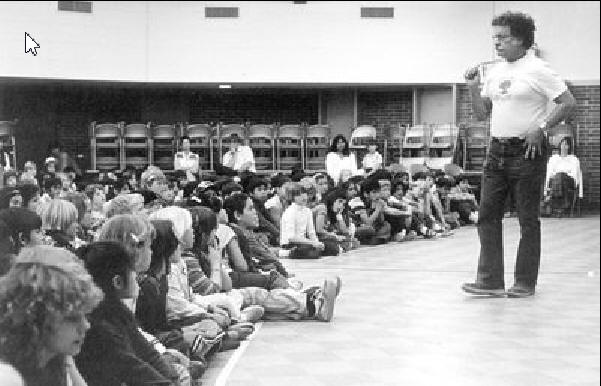
Ab Teaching Children to Hug-A-Tree
